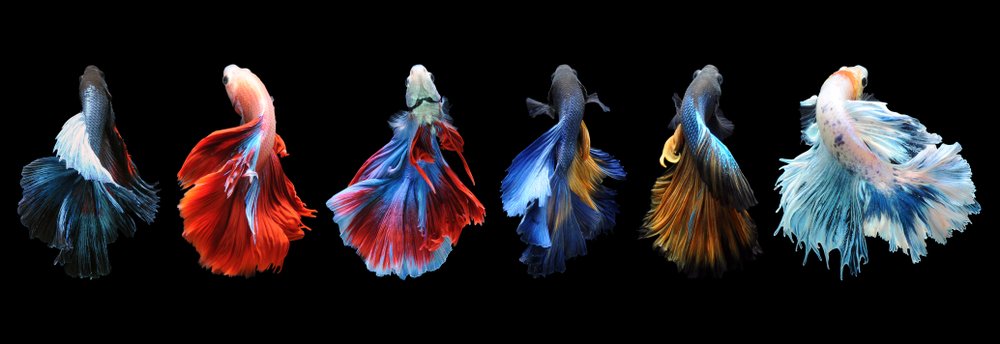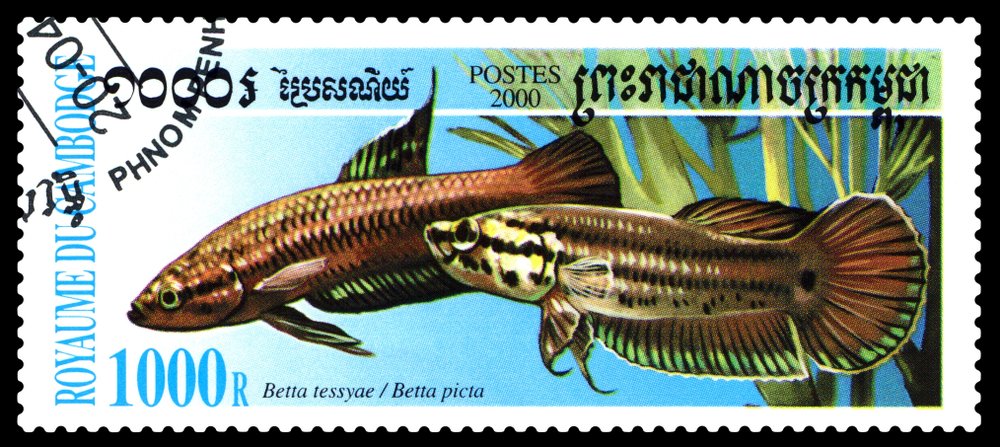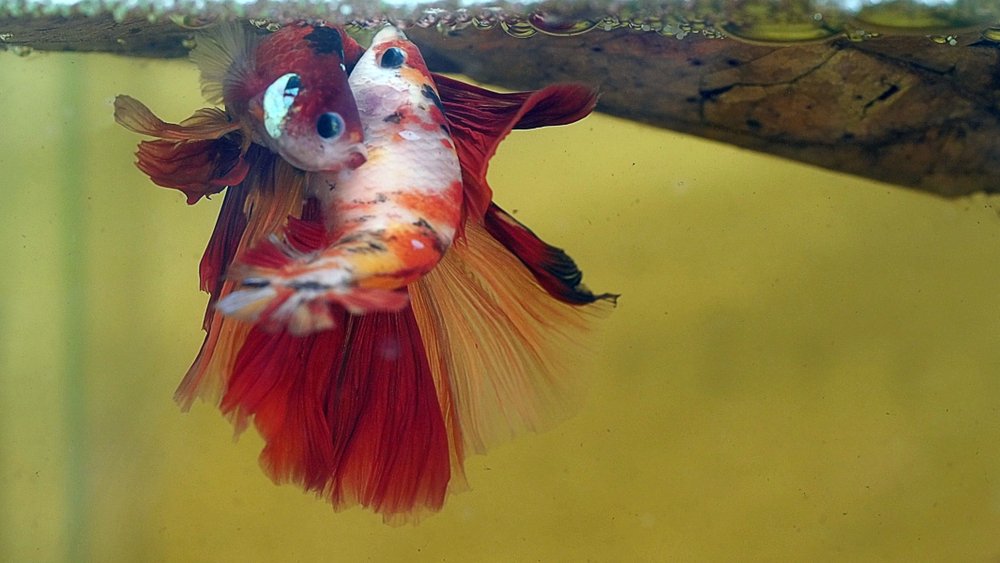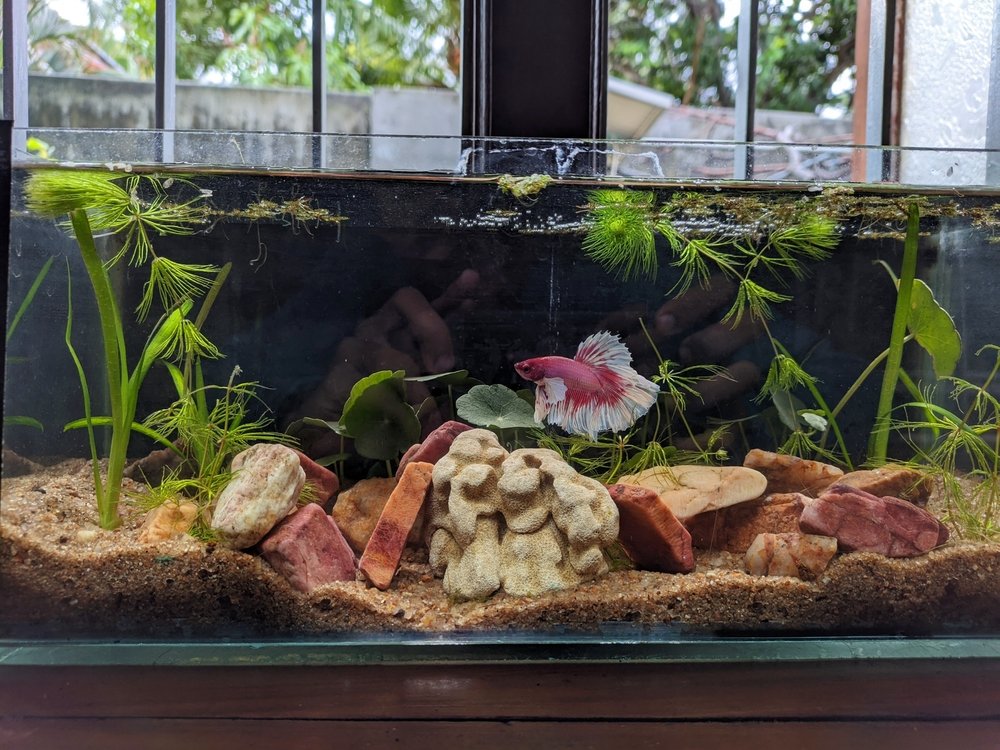Surely, you can do Betta?
By Max Pedley
For many years, the Fighting Fishes of the genus Betta have been poorly misunderstood. Even within aquarist circles, the Siamese Fighter (Betta splendens) remains synonymous with the genus. There are 73 distinct species of Betta, of which over half are classified from near threatened through to extinct by the IUCN red list and may well disappear before many even get chance to learn about, let alone see. These other species of fighting fishes are often collectively referred to as wild-types or simply, wild Betta.

We are Siamese
As the name suggests, the Siamese Fighter is found in Thailand. Siam being the old name for the country. Reports from the Malay peninsula, Vietnam and Cambodia all refer to naturalised populations of domestic animals. These were released through negligence or as a lucrative venture for the Ornamental Aquatic Trade or the even crueller Fighting Fish traditions, where they are known often as Plakad, meaning ‘fighting’ or ‘biting’ fish. Such traditions started over 150 years ago and swelled with popularity. In fact, the popularity of such “sport” reached a level that the King of Siam decided it should be taxed and regulated.
There is difficulty in calculating how this feralisation encroaches on the ecology of endemic species, but as we have witnessed many times before, it is best to not have to find out. Unfortunately, released Swordtails (Xiphophorus spp.) and other household tropical fish names have already established alien populations throughout South East Asia, impacting native flora and fauna. Large Tilapia cichlids (Oreochromis spp.) originally introduced as a food fish, muscle out native competitors and become predators of smaller fish and amphibians.
The wider genus is spread throughout South-East Asian countries, with strongholds of interest including Indonesia and Singapore. Unfortunately, collection for the trade, habitat degradation and other, all too familiar forms of exploitation threaten the extancy of a remarkably diverse group of fish. As humans move further into natural areas, urbanisation and pollution account for a dramatic decrease in populations of not just fish, but other animals too. In Java, the Near Threatened Decorated Fighting Fish (Betta picta) shares territories with the newly discovered but severely threatened Trilaksono bush frog (Chirixalus trilaksonoi). Umbrella conservation would certainly help both species.

How aggressive are Betta?
It is easy to believe that the flowing finned, pouty fish, which humans have created for their own pleasure are out and out aggressive. After all, we call them Fighting Fish! In reality, evolution’s careful hand has crafted a devilishly diverse genus, stretching far from the stereotypes. Pinpointed, survival orientated forms seem alien to those who have only observed the Siamese fighter.
Peaceful, amicable behaviour features heavily too, making the common name obsolete. In nature, ‘fighting’ is limited to opercular (Another name given to the gill covers/cheeks of fish) flaring and other testosterone provoked routines, often including dance like movements.
Because the wild types are peaceful, well researched tankmates can be included for many species, but beware. Larger fish such as the Tiger Betta (Betta patoti) are predators with huge mouths and will actively hunt other fish and live food such as hoppers and large crickets, even jumping clean of the water to catch their target.

The coccina group
The Betta coccina complex species’ are more often known as the Wine Red Betta, no doubt due to the deep red colouration many members of the group display. The coccina group could even be considered amphibious, out of necessity rather than choice. For a few short months of the year during the dry season, these fish survive in essentially wet leaves. The shallow pools they inhabit have a very low pH due to the tannin and humic acid released by rotting leaf litter. Oxygen content is also low as the water is stagnant. Luckily, all Fighting Fish have a specially developed organ known as the labyrinth organ to help them breath atmospheric air.
The unimaculata group
One Spot Fighting Fish, Betta unimaculata and closely related species are giants of the group, with males often reaching lengths of up to 5”. Members of the group inhabit faster flowing streams of Borneo, to which they are endemic. The One Spot Fighters make arguably the best pet fish of the genus as they seem incredibly clever, even recognising owners and interacting with them during feeding times. These are the predators of the group and relish a diet heavy with live foods such as small crickets, mealworms and bloodworm.

Breeding Bettas
The reproductive strategies of Fighting Fishes can be split into two; Mouthbrooders and Bubblenesters. Interestingly, parental care is virtually always carried out by the male fish.
Mouthbrooders hold eggs within the mouth for up to 3 weeks, sometimes feeding on unfertilised eggs to fuel him through such a paternal mission. Other than these eggs, the male will not feed on anything else during incubation. Mouthbrooders, much like viviparous reptiles, produce low numbers of highly developed young. Such a method of reproduction is useful in fast flowing water, where neonatal larvae may struggle to fight strong currents. In total, approximately 55 species employ this technique.
Bubblenesters, on the other hand produce floating rafts of bubbles in which the eggs are sheltered. These nests help to keep the eggs protected in on place. Because such nests are exposed to heavy rainfall and disruption from other environmental activity, the eggs must hatch quickly and fry become independent soon after. Therefore, the fry are very small and numerous, as it is likely many will become prey as soon as they leave the protection of their father. Roughly 18 species are bubblenesters.

Captive Care
There is a Betta for everyone. Contrary to any information regarding the ‘wild side’, not all species are obligate acidophiles or blackwater fish. By this I mean species which require acidic water to thrive. For instance, black sheep of the genus, B. simplex and B. mahachaensis (The Simple and Mahachai Betta respectively) both thrive when kept in hard alkaline water, though to keep the Snakehead and White Seam Betta, soft or RO * water would be advantageous.
As such, no hard or fast rules can be given which dictate the successful husbandry of Betta spp. If you want to start out, opt for a member of the stereotypical splendens group. The Peaceful Betta (B. imbellis) offers a highly showy, attractive fish that will adapt to a wide range of parameters, including slightly acidic to slightly alkaline. Filter with gentle, air powered sponge filters, plant the tank heavily and provide plenty of hiding spaces and you can’t go wrong. For those keepers who prefer less-gaudy specimens, plenty of ‘Ditch’ Betta are available. These are species which are incredibly hardy, often mouthbrooding animals adapt at conquering even the worst of conditions. Such fish are seldom endangered, because even pollution does not seem to have negative effects.
For the experienced aquarist, the coveted Brunei Beauty (Betta macrosotoma) may be your quarry. A truly tricky fish to keep, low pH is necessary for long term success. Unusually for acidophilic species, a moderate conductivity seems beneficial. This can be achieved with Himalayan pink salt, of all things! A low resistance to parasites and bacteria comes with the fish, meaning you must be either brave, rich or confident to fathom spending triple figures for a pair. If you can find them, that is…

What sort of tank do I need?
The needs of Fighting Fishes are so varied that there is no single answer to this question and the size of the tank itself depends on the species you wish to keep. For a hardcore fish breeder looking to maximise a yield of youngsters, a species only tank will be necessary. Breeders will often use pieces of floating polystyrene, cork and even live floating plants on which bubblenesters can anchor their nest. Nylon ‘mops’ provide refuge for newly hatched or in the case of mouthbrooders, released fry.
Other, more casual keepers might opt to keep their fish in a community tank. Provided tankmates are suitable, many setups will work well. It is however worth noting that many Betta spp. are accomplished jumpers, so any prospective tanks require a tightfitting lid.
More recently, many keepers are joining the biotope movement. This is essentially the aquarium equivalent of the Bio-active setup. A Biotope aims to recreate a slice of nature, using hardscape and décor which the fish would naturally be found in and around. Dried leaf litter from oak, beech and sweet chestnut works well, with the added benefit of the organic ‘tea’ released into the water as they decompose. In some instances, a biotope could even be worked into a paludarium, creating a display with interest at all levels.
Paludarium, you say?
Betta spp. lend themselves well to a mixed species paludarium. Due to the ability to breathe air and small overall size, certain species such as the Sword Betta (Betta falx) and Brown’s Betta (Betta brownorum), smaller bodies with little to no filtration can be utilised well. In such paludarium setups, water quality should still be monitored regularly via the use of a proprietary test kit and water changes carried out when necessary.
Water should be at least 10l volume as a minimum for the smaller species, though depth is of little importance, opening the possibilities of including terrestrial amphibians such as dart frogs. Unfortunately, most Betta will predate on young tadpoles. Fighting Fish will also help to keep your water features clear of live food too, as they polish off small items such as Fruit Flies with gusto.
Top 5 Plaudarium Betta
Betta brownorum –Brown’s Betta
Betta Hendra – Hendra’s Betta
Betta falx – Sword Betta
Betta channoides – Snakehead Betta
Betta mahachaiensis – Mahachai Betta
Going out Fighting
Big cats, megafauna and cute animals never struggle for support. Big round eyes, a healthy serving of anthropomorphisation and bright colours sell them all day long. Without such assets, subtly coloured Betta go unnoticed. Less important species some might say. They simply don’t get the help they deserve, or frankly need!
Luckily, some zoos and conservation groups have recognised the dire situation of the genus and have begun to work towards increasing awareness. Captive breeding projects make up a significant proportion of such work but as with any animals, if the cause of population decrease is not solved, reintroduction schemes are completely in vain. Zoos can increase education too, through displays. As discussed, well thought out themes allow Fighters to cohabit with a plethora of more typical zoo animals, provided conditions are met. It’s a surprise we don’t see them displayed more often, perhaps we should look to how Umbrella species can benefit them.